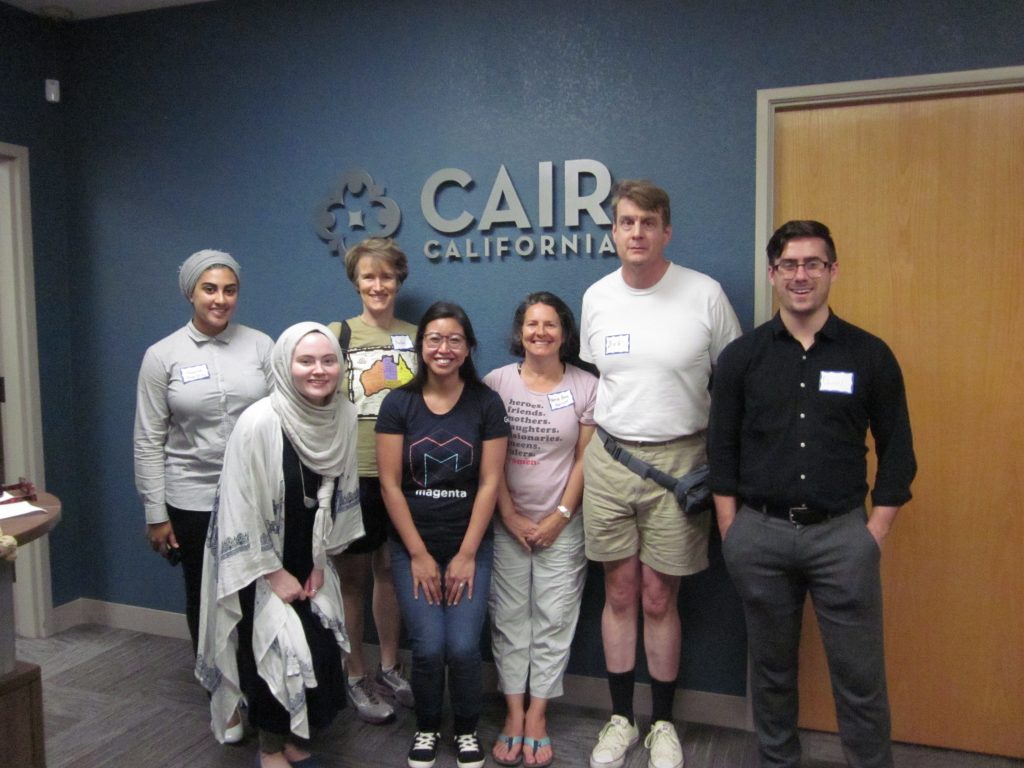Courtney Mangus, the programs coordinator for the Council on American-Islamic Relations or CAIR, spoke passionately to a group of six people on the values and steps necessary to be a supportive bystander for a person targeted due to their ethnic identity.
“I think the reason for that is that everyone is noticing now that hate crimes and hate incidents are on the rise and that many communities are being impacted by these hate incidents and hate speech,” Mangus said on why the trainings are so vital.
The training program is part of CAIR, a national organization which prioritizes and prides itself on outreach and interacting with local communities. CAIR is a grassroots organization that supports community members with programs such as the bystander intervention program. The Santa Clara program started about a year ago.
Attendees came to the Bystander Intervention Training session on Friday night for many reasons including the current political climate.
“I came to this because of the current political climate [there] is a lot of harassment going on and, apparently, the level of hostility in commonplace areas is rising,” said Kate Dahan, a first-time bystander trainee. “I just feel like it’s important to know what to do in that situation.”
Another first-time participant, Mary Beth Garrett, came to the training to learn about the best way to intervene in situations in which people were being harassed.
“I am a person who intervenes in situations that I think are wrong,” said Garrett, a Sunnyvale resident, “and I thought it would be a good idea to learn how to do that effectively and safely.”
At the session trainees partook in acting out several different imaginary scenarios that had an ‘attacker,’ ‘bystander’ and ‘targeted person.’ Some scenarios took place on a bus, in which the attacker would hurl some verbal vitriol toward a targeted person, who acted as a Muslim wearing a hijab. The bystander would come to their aid by introducing themselves and ask if they wanted to move to a different spot on the bus or get off of the bus at the next stop.
During these scenarios, the bystander has to figure out different ways to help and support the targeted person without putting the targeted person or themselves in a potentially violent situation.
Daniel Anaforian, an incoming senior at Santa Clara University and intern with CAIR explained the work they do best:
“The great thing about CAIR is that it’s so involved in the community. We do outreach every Friday, where we go to mosques across the Bay Area interacting with communities in Oakland, San Francisco. We hold these trainings there, but also, here in Santa Clara.”
The bystander trainings did not originate in Santa Clara. According to Mangus, the Montgomery County Coalition “first drafted the materials for the bystander training with the script.” However, Mangus says their office added on to the material for bystander training in Santa Clara.
Bystander intervention trainings are held throughout the Bay Area. About 1,500 people have been trained so far. Many people have learned valuable information on bystander intervention, according to Mangus.
“Based on what they’re saying and the survey results that we have, people feel like they were very informed by the training,” said Mangus. “They feel more prepared. They got to practice and they learned some valuable things they hadn’t thought of before.”
